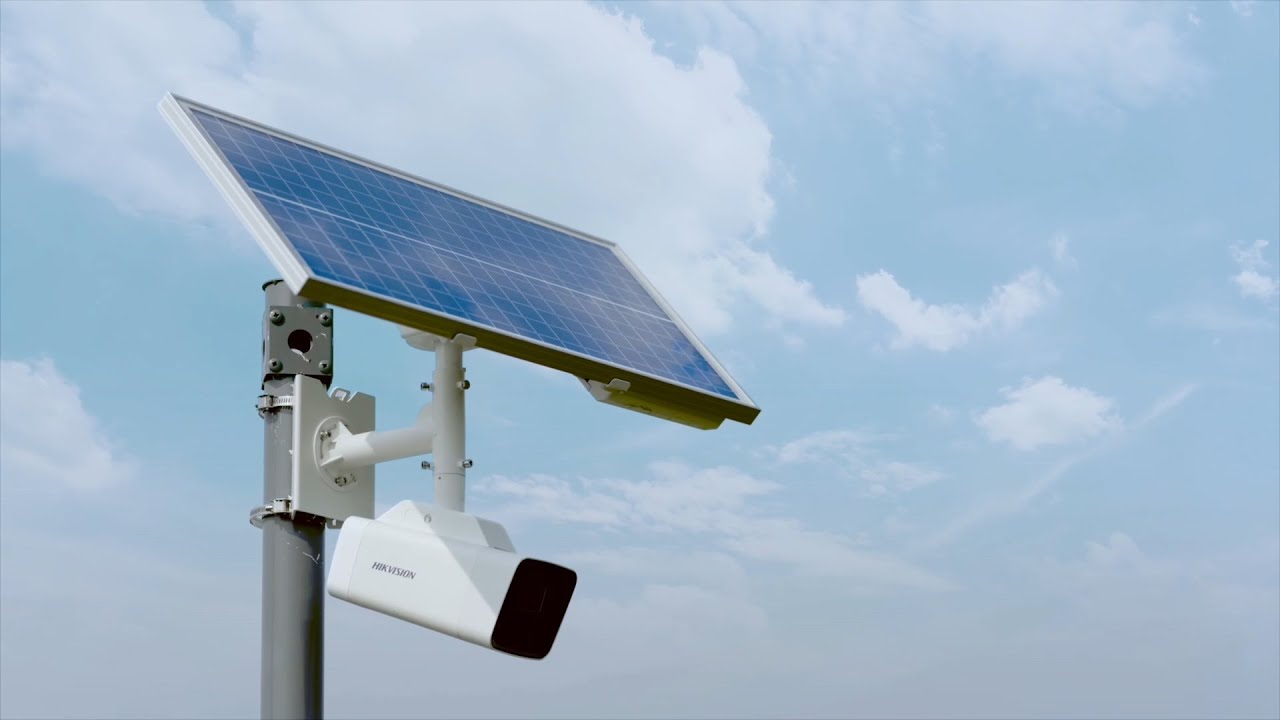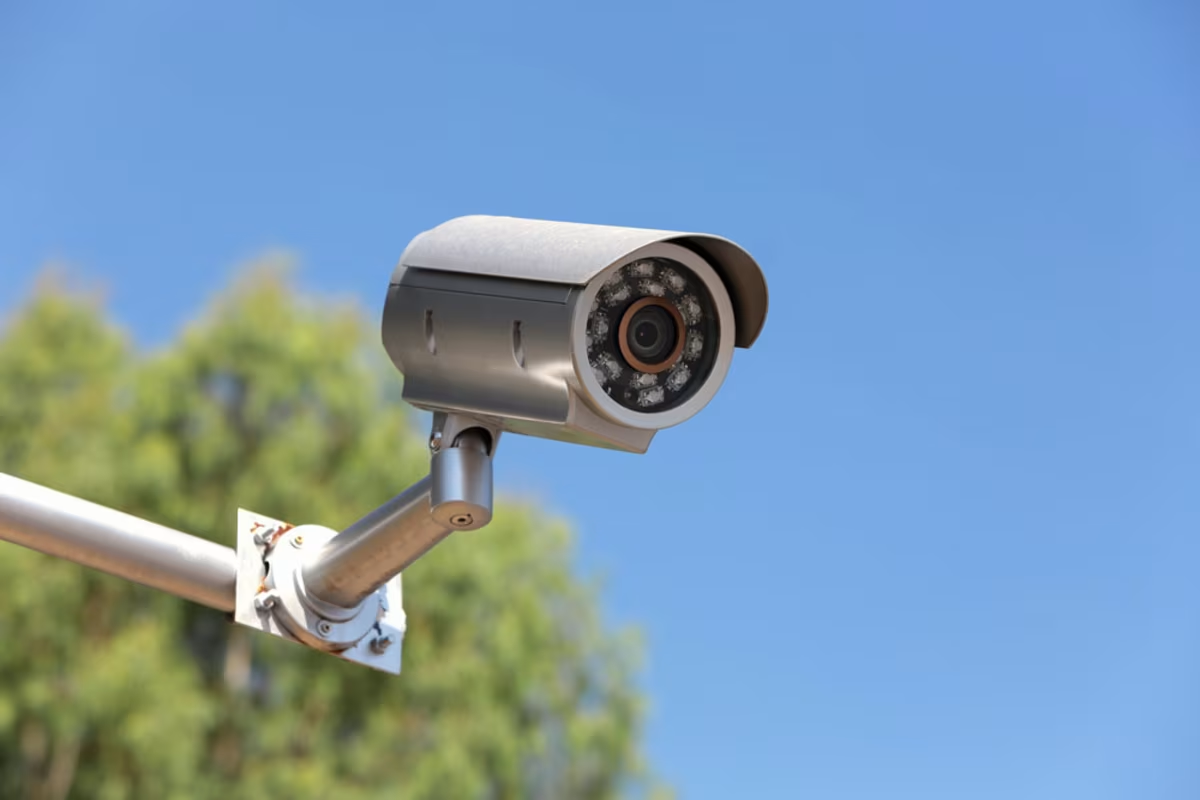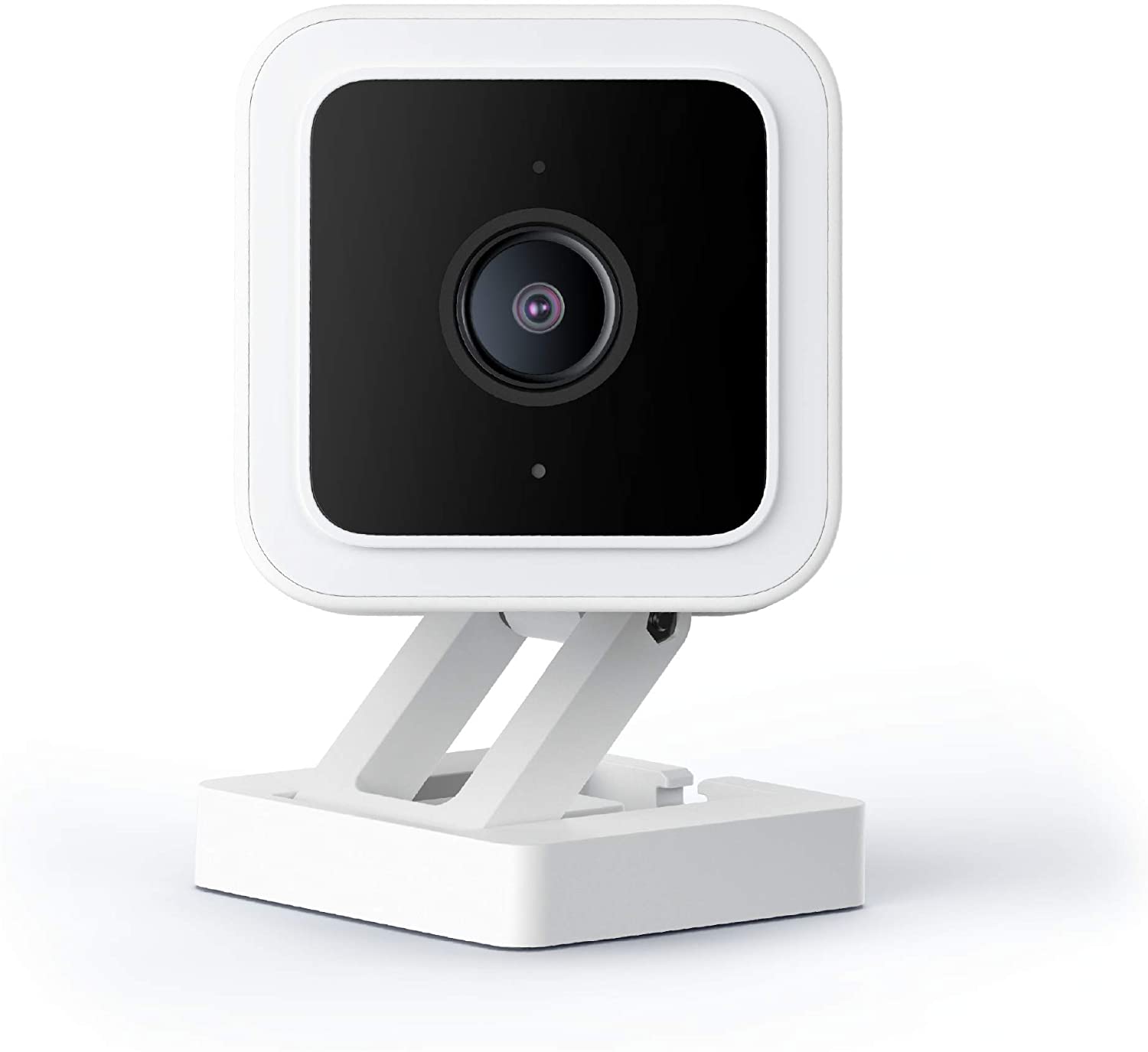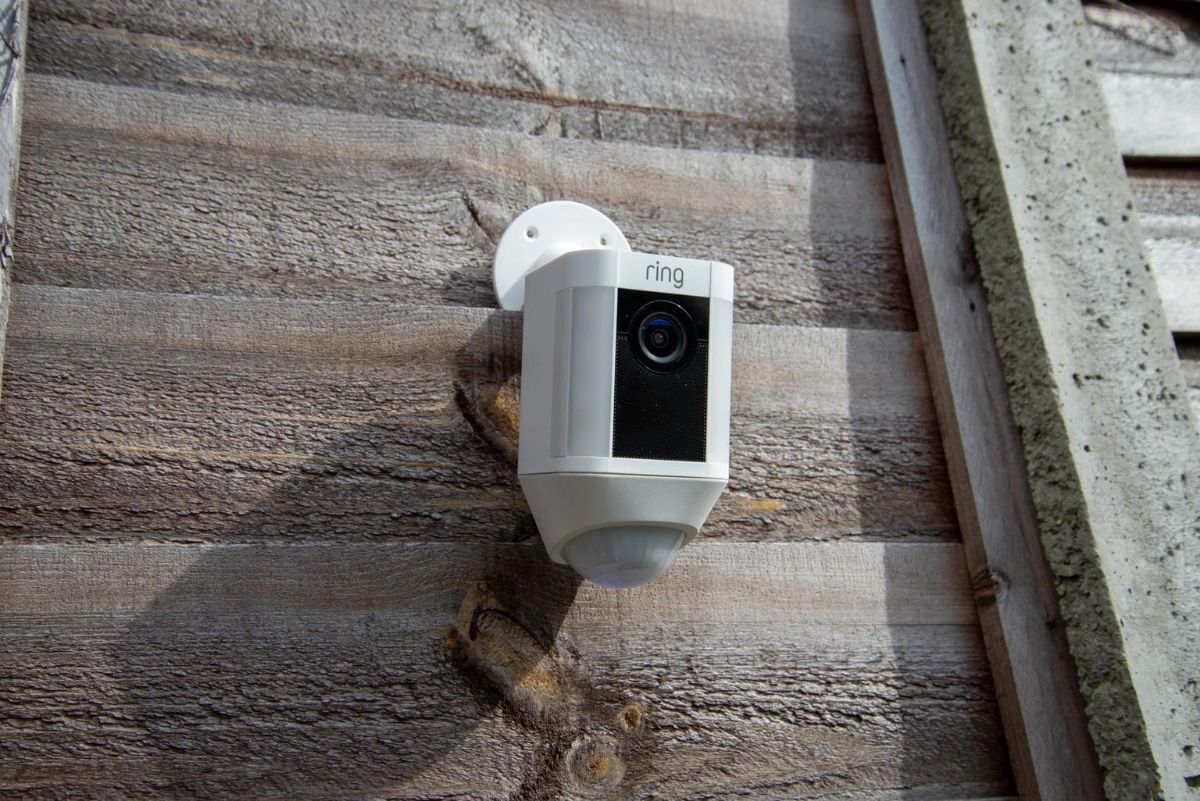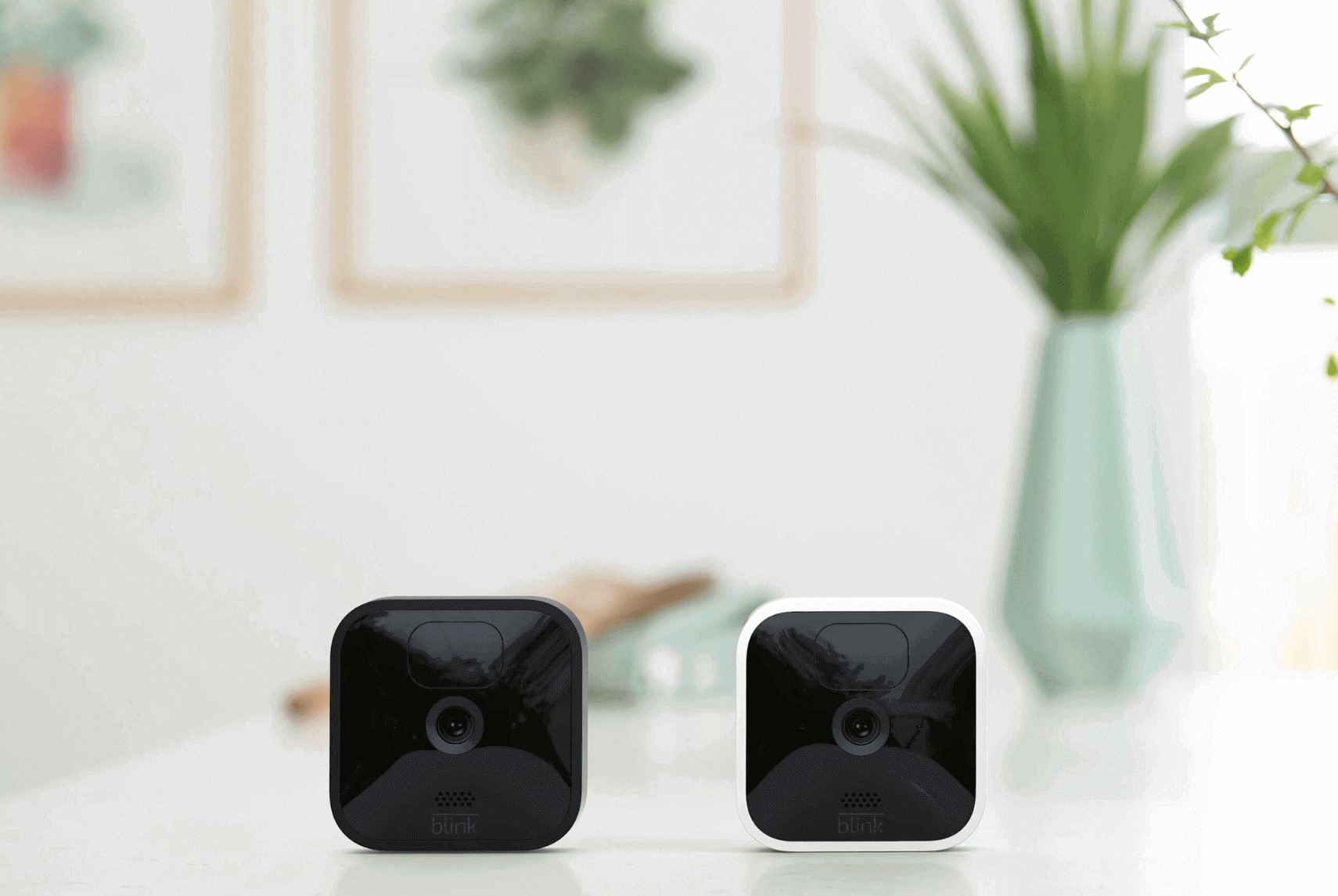Home>Home Security and Surveillance>How Do Solar-Powered Security Cameras Work
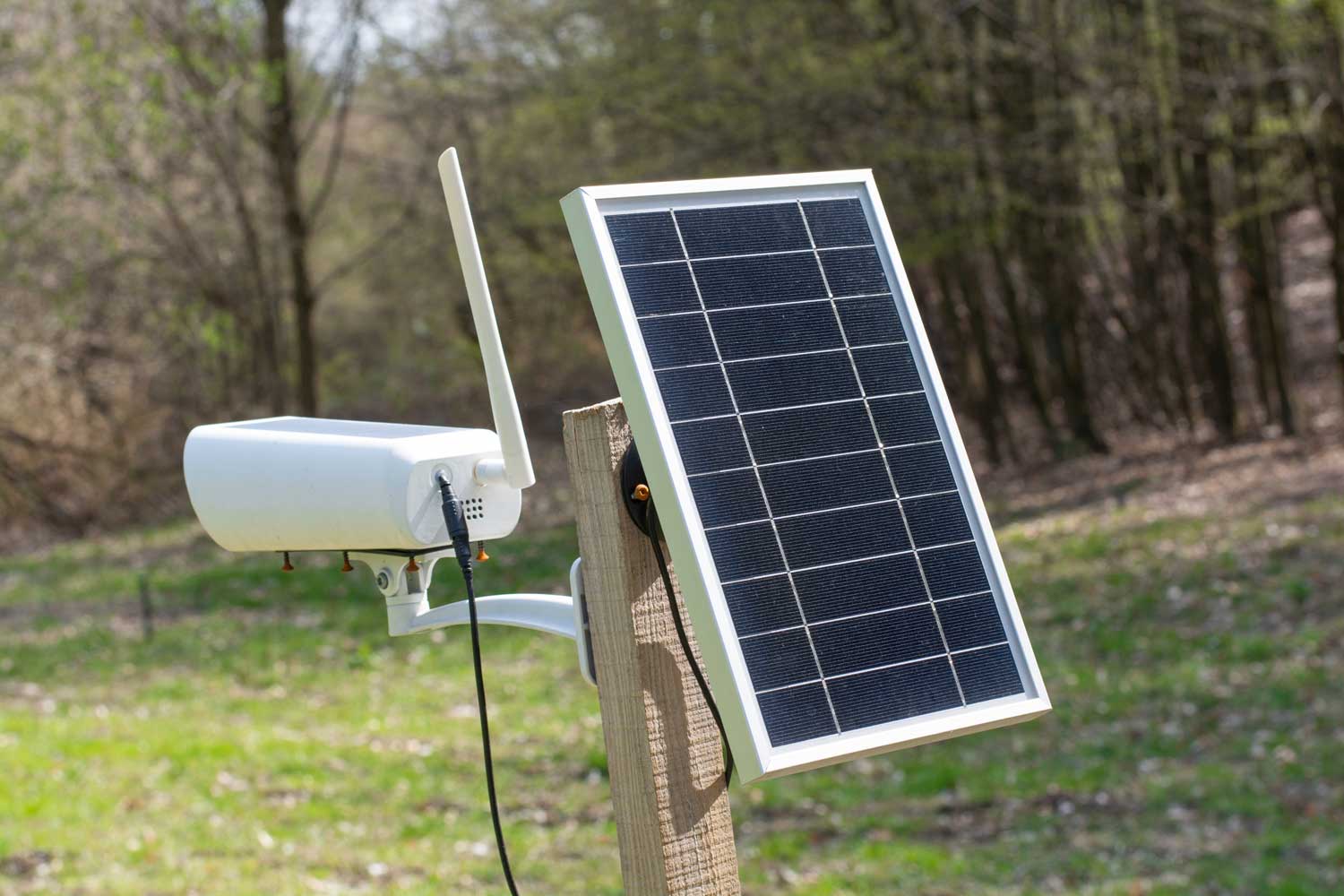

Home Security and Surveillance
How Do Solar-Powered Security Cameras Work
Modified: March 6, 2024
Discover how solar-powered security cameras work and enhance your home security and surveillance with this detailed guide.
(Many of the links in this article redirect to a specific reviewed product. Your purchase of these products through affiliate links helps to generate commission for Storables.com, at no extra cost. Learn more)
Introduction
Welcome to the world of solar-powered security cameras, where cutting-edge technology meets eco-friendly sustainability. With the increasing need for smart and reliable surveillance systems, solar-powered security cameras offer a unique solution that harnesses the power of the sun to keep your home and loved ones safe. In this article, we will explore the inner workings of these innovative devices, their advantages, limitations, installation, and maintenance, as well as various applications.
Gone are the days when security cameras relied solely on electricity or batteries. Solar-powered security cameras have emerged as a game-changer in the realm of home security, offering a reliable and energy-efficient alternative. These cameras are equipped with solar panels that capture sunlight, converting it into usable energy to power the camera and its components. This self-sustaining feature makes them an ideal choice for locations where electrical wiring may be challenging or inaccessible.
The components of solar-powered security cameras are specifically designed to maximize energy efficiency while maintaining high-quality surveillance capabilities. From the solar panel that collects solar energy to the rechargeable batteries that store the converted power, each component works in harmony to ensure continuous operation, even in low-light conditions.
Key Takeaways:
- Solar-powered security cameras harness sunlight to operate, making them eco-friendly and cost-effective. They offer reliable surveillance, easy installation, and remote accessibility, enhancing home security without relying on traditional power sources.
- While solar-powered security cameras have limitations, such as dependence on sunlight and maintenance requirements, their versatility makes them suitable for residential, rural, construction, and environmental monitoring applications.
Read more: How Do Wireless Security Cameras Work
Overview of Solar-Powered Security Cameras
Solar-powered security cameras consist of several key components that work together to provide a comprehensive surveillance solution. These components include:
- Solar Panel: The solar panel is the primary component responsible for converting sunlight into electricity. It is usually mounted on the camera unit or positioned separately for optimal sun exposure.
- Battery: The rechargeable battery stores the converted solar energy and powers the camera, allowing it to operate during the night or when sunlight is limited.
- Camera Unit: The camera unit captures images and videos, which can be viewed in real-time or recorded for later review.
- Connectivity: Solar-powered security cameras can be connected to a network, enabling remote access and monitoring of the camera feed through smartphones, tablets, or computers.
- Additional Features: Depending on the model and brand, solar-powered security cameras may include features such as motion detection, infrared night vision, two-way audio, and weather resistance.
Working Principle of Solar-Powered Security Cameras
Key Takeaways:
- Solar-powered security cameras harness sunlight to operate, making them eco-friendly and cost-effective. They offer reliable surveillance, easy installation, and remote accessibility, enhancing home security without relying on traditional power sources.
- While solar-powered security cameras have limitations, such as dependence on sunlight and maintenance requirements, their versatility makes them suitable for residential, rural, construction, and environmental monitoring applications.
Read more: How Do Wireless Security Cameras Work
Overview of Solar-Powered Security Cameras
Solar-powered security cameras represent a significant advancement in the realm of home security and surveillance. These innovative devices combine the power of solar energy with cutting-edge technology to provide a reliable and eco-friendly solution for safeguarding your property. Let’s explore the key components and functionalities of solar-powered security cameras:
Solar Panel
The solar panel is the heart of a solar-powered security camera system. It consists of photovoltaic cells that convert sunlight into electrical energy. These panels are strategically positioned to maximize sun exposure and ensure optimal performance. The captured solar energy is then stored in rechargeable batteries for later use, ensuring continuous operation even during periods of limited sunlight.
Battery
The rechargeable battery is a crucial component of solar-powered security cameras. It stores the converted solar energy and supplies power to the camera unit, ensuring uninterrupted operation. The capacity of the battery varies depending on the camera model and can provide sufficient power to sustain the camera for extended periods, including nights and cloudy days.
Read more: How Do Home Security Cameras Work
Camera Unit
The camera unit is responsible for capturing high-quality images and videos. It is equipped with various features such as high-definition resolution, wide-angle lenses, and remote pan/tilt capabilities to provide enhanced surveillance coverage. Some camera models also offer advanced functionalities like motion detection, facial recognition, and 24/7 monitoring for added security.
Connectivity
Solar-powered security cameras can be connected to a network via Wi-Fi or Ethernet, allowing remote access and monitoring. Users can access the camera feed in real-time, review recorded footage, and configure camera settings through a dedicated mobile app or a web-based interface. This connectivity enables homeowners to keep a watchful eye on their property from anywhere in the world, providing peace of mind and enhancing overall security.
Additional Features
In addition to the core components, solar-powered security cameras often come equipped with additional features to enhance functionality and usability. These include motion detection sensors, infrared night vision capabilities, two-way audio communication, weather resistance, and storage options such as SD cards or cloud-based storage. These features add value and flexibility to the surveillance system, ensuring comprehensive coverage and reliable performance.
Overall, solar-powered security cameras offer a cost-effective, eco-friendly, and reliable solution for home security. By harnessing the power of the sun, these cameras offer continuous surveillance with minimal maintenance and the convenience of remote access and monitoring. In the next sections, we will delve into the working principle, advantages, limitations, installation, and maintenance of solar-powered security cameras.
Components of Solar-Powered Security Cameras
Solar-powered security cameras are made up of several key components that work together seamlessly to provide reliable surveillance while harnessing solar energy. These components ensure the smooth operation and energy efficiency of the camera system. Let’s explore the different components that make up a solar-powered security camera:
Solar Panel
The solar panel is the primary component of a solar-powered security camera system. It consists of photovoltaic cells that convert solar energy into electrical energy. These panels are designed to capture sunlight efficiently and are typically positioned to receive maximum exposure to the sun throughout the day. The solar panel serves as the power source for the camera system by charging the battery that stores the energy for use during periods of limited sunlight.
Battery
The battery is a critical component of solar-powered security cameras. It stores the electrical energy generated by the solar panel and provides power to the camera system when sunlight is limited or unavailable, such as during the night or on cloudy days. The battery is rechargeable and can store enough power to keep the camera system operational for extended periods. The capacity of the battery varies depending on the specific camera model and the power requirements of the system.
Read more: How Do Home Security Cameras Work
Camera Unit
The camera unit is the main surveillance component of a solar-powered security camera system. It is responsible for capturing and recording video footage. The camera unit is equipped with high-resolution lenses, image sensors, and other advanced features to ensure sharp and clear video quality. Some camera units also offer additional features such as night vision capabilities, motion detection sensors, and customizable recording settings, providing enhanced security and surveillance options.
Connectivity
Solar-powered security cameras are often equipped with connectivity options to enable remote access and monitoring. They can be connected to a network, typically using Wi-Fi or Ethernet, allowing users to access live video feeds and recorded footage remotely through a smartphone, tablet, or computer. This connectivity provides homeowners with the flexibility to monitor their property in real-time, receive motion detection alerts, and customize camera settings from anywhere at any time.
Mounting Hardware
Proper installation of solar-powered security cameras is essential for optimal performance. These cameras come with a range of mounting hardware, including brackets, screws, and other accessories, to securely attach the camera unit and solar panel to desired locations such as walls, ceilings, or poles. The mounting hardware ensures stability and allows for adjustable positioning to achieve the desired viewing angle and surveillance coverage.
Additional Accessories
In addition to the core components, solar-powered security camera systems may include additional accessories to enhance functionality and convenience. These accessories can include weatherproof housing to protect the camera unit from harsh environmental conditions, solar panel stands or poles for flexible installation options, and optional solar charger kits to improve solar energy collection efficiency.
The combination of these components ensures that solar-powered security cameras operate efficiently, provide reliable surveillance, and offer remote accessibility. In the next section, we will explore the working principle of solar-powered security cameras and how these components work together to provide an effective home security solution.
Working Principle of Solar-Powered Security Cameras
Solar-powered security cameras operate on a simple yet effective principle: harnessing solar energy to power the camera system. These cameras utilize solar panels to convert sunlight into electrical energy, which is then stored in batteries for later use. Let’s delve into the working principle of solar-powered security cameras:
Solar Energy Conversion
The solar panel, typically mounted on or near the camera unit, is made up of photovoltaic cells. These cells are designed to capture sunlight and convert it into direct current (DC) electricity. As sunlight hits the cells, the photovoltaic materials within the cells generate an electric charge, creating a flow of electrons.
Battery Storage
The converted solar energy is then transferred to the battery for storage. The battery acts as a reservoir, storing the electrical energy generated by the solar panel. This stored energy ensures that the camera system remains operational during periods of low or no sunlight, such as at night or on cloudy days.
Power Supply to the Camera Unit
The stored energy in the battery is used as a power supply for the camera unit. When the camera needs power, it draws energy from the battery to operate the various components, including the image sensors, lenses, and connectivity features.
Energy Management
Efficient energy management is crucial for the proper functioning of solar-powered security cameras. These cameras are equipped with intelligent power management systems that optimize energy usage and ensure continuous surveillance. The system monitors the battery’s charge level and adjusts the power consumption of the camera unit accordingly, such as reducing certain features or entering power-saving modes when necessary.
Solar Charging
During daylight hours when the solar panel is exposed to sunlight, it continues to generate electricity. Any excess energy not immediately used by the camera system is used to recharge the battery. This process allows the camera to continually replenish its power supply and ensures uninterrupted operation even during extended periods of low sunlight or adverse weather conditions.
Overall, solar-powered security cameras work by efficiently converting solar energy into electrical power, which is stored in batteries to provide continuous operation. This self-sustaining power source eliminates the need for traditional electrical wiring or frequent battery changes. The combination of solar energy conversion, battery storage, and intelligent power management ensures that solar-powered security cameras can deliver reliable and uninterrupted surveillance for enhanced home security.
In the following sections, we will explore the advantages and limitations of solar-powered security cameras, as well as the installation and maintenance considerations.
Read also: 11 Best Solar Security Cameras For 2024
Advantages of Solar-Powered Security Cameras
Solar-powered security cameras offer a range of advantages that make them a popular choice for homeowners seeking an effective and eco-friendly surveillance solution. Let’s explore the key advantages of using solar-powered security cameras:
Energy Efficiency
Solar-powered security cameras are highly energy-efficient. By harnessing solar energy, these cameras eliminate the need for traditional electrical power sources, reducing reliance on the grid and minimizing energy consumption. The captured solar energy powers the cameras during the day and charges the batteries for nighttime operation, ensuring continuous surveillance with minimal impact on the environment or electricity bills.
Cost-Effective
Installing solar-powered security cameras can be a cost-effective choice in the long run. While the upfront costs may be higher compared to traditional security cameras, the absence of electricity consumption reduces ongoing expenses. Solar-powered security cameras also eliminate the need for professional electrical wiring, reducing installation costs. Additionally, the durability and longevity of solar-powered cameras result in fewer maintenance and replacement costs over time.
Easy Installation
Installing solar-powered security cameras is hassle-free and does not require complex electrical wiring. These cameras can be mounted in various locations without the need for professional assistance, making them suitable for both indoor and outdoor use. The absence of electrical constraints allows for greater flexibility in choosing camera placement and ensures easy integration with existing surveillance systems.
Remote Accessibility
Solar-powered security cameras are designed with connectivity features that enable remote access and monitoring. Users can access live camera feeds and recorded footage from anywhere at any time using smartphones, tablets, or computers. This remote accessibility provides homeowners with peace of mind, allowing them to keep an eye on their property and loved ones, even when they are away.
Reliable Operation
Solar-powered security cameras are designed to operate reliably in various environmental conditions. They are equipped with weather-resistant features that protect them from dust, rain, and extreme temperatures. The rechargeable batteries store enough energy to ensure continuous operation, even during prolonged periods of limited sunlight or power outages. Additionally, the intelligent power management systems optimize energy usage, prolonging the camera’s battery life.
Environmentally Friendly
Solar-powered security cameras are an environmentally friendly choice for home surveillance. By reducing reliance on traditional power sources, these cameras help decrease carbon emissions and contribute to a greener planet. Harnessing solar energy as a renewable resource aligns with sustainable practices and reduces the overall carbon footprint of the surveillance system.
Overall, solar-powered security cameras offer a range of advantages that make them an attractive option for homeowners. From energy efficiency and cost-effectiveness to easy installation and remote accessibility, these cameras provide reliable surveillance without compromising on sustainability. In the next section, we will explore the limitations of solar-powered security cameras to provide a well-rounded perspective.
Limitations of Solar-Powered Security Cameras
While solar-powered security cameras offer numerous advantages, it is important to consider their limitations before making a decision. Understanding these limitations will help you make an informed choice and ensure that solar-powered security cameras align with your specific needs and circumstances. Let’s explore some of the key limitations:
Read more: How Wireless Security Cameras Work
Dependence on Sunlight
Solar-powered security cameras rely on sunlight to generate the necessary electrical energy. In locations with limited sunlight or during cloudy days, the camera’s performance may be affected. Extended periods of inadequate sunlight can reduce the battery’s charge, potentially leading to temporary interruptions in surveillance. It’s essential to consider the local climate and assess if solar-powered cameras will receive sufficient sunlight for reliable operation.
Power Storage Capacity
The battery’s storage capacity determines the camera’s ability to operate during periods of limited sunlight, such as at night. While advancements in battery technology have increased storage capacities, there is still a limit to how long the camera can remain operational without direct sunlight. It’s important to carefully select a camera system with an adequate battery capacity to meet your surveillance needs, especially if the area experiences extended periods of low sunlight.
Limited Placement Options
The placement of solar-powered security cameras is dependent on access to sunlight. To ensure optimal performance, the solar panels need to be positioned where they can receive maximum sun exposure. This may limit the available placement options, especially in areas with dense shade, tall buildings, or other obstructions that can block sunlight. Careful consideration of the sun’s path and available sunny areas is necessary to determine the most suitable camera placement.
Initial Cost
The upfront cost of solar-powered security cameras can be higher compared to traditional wired cameras. The cost of solar panels, batteries, and other components contribute to the overall price of the camera system. However, it’s important to consider that solar-powered cameras eliminate the need for professional electrical wiring, reducing installation costs. Moreover, the long-term energy savings and potential cost reductions outweigh the initial investment in many cases.
Read more: How Does A Security Camera Work
Maintenance Requirements
Solar-powered security cameras require regular maintenance to ensure optimal performance. The solar panels need to be kept clean and free from debris, such as dirt or leaves, to maximize sunlight absorption. Additionally, the batteries may require periodic checking and replacement after a certain number of charge cycles. It’s important to follow the manufacturer’s guidelines for maintenance and address any issues promptly to ensure the camera system’s longevity.
System Scalability
Solar-powered security camera systems may have limitations when it comes to scalability. Adding more cameras to the system may require additional solar panels and batteries to maintain proper power supply. It’s crucial to consider the scalability options of the chosen camera system and determine if it aligns with your future expansion or surveillance needs.
Understanding these limitations will allow you to make an informed decision when considering solar-powered security cameras for your home. By carefully assessing your specific requirements and considering factors such as sunlight availability, maintenance, and scalability, you can determine if solar-powered security cameras are the right choice for your surveillance needs.
In the next section, we will explore the installation and maintenance considerations for solar-powered security cameras.
Installation and Maintenance of Solar-Powered Security Cameras
Proper installation and regular maintenance are crucial for the optimal performance and longevity of solar-powered security cameras. Following the manufacturer’s guidelines and best practices will ensure the effective operation of the camera system. Let’s explore the key considerations for installing and maintaining solar-powered security cameras:
Installation
1. Assess Sunlight Availability: Before installation, assess the sunlight availability in the desired camera placement area. Ensure that the selected location receives sufficient sunlight throughout the day to power the solar panel effectively. Avoid areas with consistent shade or obstructions that may limit sunlight exposure.
2. Position the Solar Panel: Mount the solar panel in an elevated position for maximum sun exposure. The panel should face the sun at the optimal angle to capture sunlight effectively. Follow the manufacturer’s guidelines and installation instructions for proper positioning and mounting.
3. Secure the Camera Unit: Install the camera unit in the desired location, ensuring it is securely mounted and protected from vandalism or tampering. Ensure that the camera has a clear line of sight for effective surveillance coverage.
4. Connect the Components: Connect the solar panel to the camera unit using the provided cables. Follow the manufacturer’s instructions for proper wiring and connectivity. Ensure that the connections are secure and protected from weather elements.
5. Test the System: After installation, perform a test to ensure that the camera system is functioning correctly. Verify that the solar panel is charging the battery and that the camera unit is operating as expected. Check the remote access and monitoring features to ensure proper connectivity.
Read more: How Do Solar Attic Fans Work
Maintenance
1. Regular Cleaning: Regularly clean the solar panel to remove dirt, dust, or debris that may accumulate and reduce sunlight absorption. Use a soft cloth or sponge with mild soap and water. Avoid harsh cleaning agents or abrasive materials that may damage the panel’s surface.
2. Battery Maintenance: Monitor the battery’s charge level regularly and ensure that it remains within the optimal range. Follow the manufacturer’s recommendations for battery maintenance, including any required replacement intervals. Inspect battery connections and terminals for any signs of corrosion and clean if necessary.
3. System Inspection: Routinely inspect the camera unit and solar panel for any signs of damage or wear. Check for loose connections, cracks, or signs of water ingress. Address any issues promptly to prevent further damage to the system.
4. Software Updates: Keep the camera’s firmware and associated software up to date to ensure compatibility and access to the latest features and security enhancements. Check for updates periodically and follow the manufacturer’s instructions for installation.
5. Battery Replacement: Over time, the battery may start to lose its capacity to hold a charge. When this happens, consider replacing the battery with a suitable replacement recommended by the manufacturer. Follow the manufacturer’s guidelines for battery replacement to maintain optimal performance.
By following these installation and maintenance best practices, you can maximize the performance and reliability of your solar-powered security camera system. Regular cleaning, battery maintenance, system inspections, and software updates will help ensure that your camera system operates effectively and provides the desired level of surveillance for your home or property.
In the next section, we will explore the various applications of solar-powered security cameras.
Applications of Solar-Powered Security Cameras
Solar-powered security cameras are versatile devices that find applications in various settings. Their ability to operate independently of electrical power sources makes them suitable for both residential and commercial use. Let’s explore some of the key applications of solar-powered security cameras:
Residential Security
Solar-powered security cameras are an excellent choice for residential properties, providing homeowners with peace of mind and enhanced security. These cameras can be installed around the perimeter of the property, near entrances, or in strategic locations to monitor and deter potential intruders. Solar-powered security cameras can integrate with existing security systems, offering continuous surveillance without the need for complicated wiring or frequent battery charging.
Rural Areas and Remote Locations
Solar-powered security cameras are particularly beneficial in rural areas and remote locations where electrical infrastructure may be limited or non-existent. These cameras can be deployed in agricultural fields, farms, ranches, or other remote sites to monitor livestock, equipment, and property. With the ability to operate independently of power sources, solar-powered security cameras provide a cost-effective and efficient surveillance solution in areas where traditional security systems may not be feasible.
Read more: How Does Alexa Work With Security Cameras
Construction Sites
Construction sites are vulnerable to theft, vandalism, and unauthorized access. Solar-powered security cameras offer a practical solution for monitoring construction sites, especially in locations without easily accessible power sources. These cameras can be easily installed in temporary locations, providing real-time surveillance to deter theft, monitor worker safety, and ensure compliance with safety regulations. The wireless connectivity of solar-powered cameras allows project managers and stakeholders to remotely access the surveillance feed and stay informed about site activities.
Roads and Highways
Solar-powered security cameras can also play a crucial role in traffic monitoring and enforcement. They can be installed along highways, intersections, or toll booths to capture and record traffic violations, monitor road conditions, and assist in accident investigations. Solar-powered cameras can provide a cost-effective solution for deploying surveillance in areas without electrical infrastructure, helping to enhance road safety and traffic management.
Outdoor Events
Solar-powered security cameras are ideal for outdoor events such as concerts, festivals, and sports events. These cameras can be deployed in temporary locations to monitor large crowds, promote safety, and deter potential security threats. Their wireless connectivity allows event organizers and security personnel to remotely access the camera feed and respond to any incidents in real-time.
Environmental Monitoring
Solar-powered security cameras can also be used for environmental monitoring purposes. They can be deployed in remote areas to monitor wildlife, natural habitats, and environmental conditions. These cameras can assist in wildlife research and conservation efforts, providing valuable insights into animal behavior, migration patterns, and habitat conservation.
These are just a few examples of the many applications of solar-powered security cameras. Whether it’s for residential security, rural monitoring, construction site surveillance, or environmental monitoring, solar-powered security cameras offer a reliable and sustainable solution for ensuring safety and protection.
Read more: How Do Outdoor Solar Lights Work?
Conclusion
Solar-powered security cameras have revolutionized the field of home security and surveillance. By harnessing the power of the sun, these cameras offer numerous advantages, making them an attractive choice for homeowners and businesses alike. From their energy efficiency and cost-effectiveness to their easy installation and remote accessibility, solar-powered security cameras provide reliable surveillance while minimizing environmental impact.
The key components of solar-powered security cameras, including the solar panel, battery, camera unit, and connectivity features, work together seamlessly to ensure continuous operation and optimal performance. The working principle of these cameras revolves around harnessing solar energy to power the system, making them self-sustaining and independent of electrical power sources.
Solar-powered security cameras find applications in various settings, including residential properties, rural areas, construction sites, roads and highways, outdoor events, and environmental monitoring. Their versatility and ability to operate in locations without access to electricity make them a practical and accessible surveillance solution.
While solar-powered security cameras have numerous advantages, it’s important to consider their limitations. Factors such as sunlight availability, power storage capacity, limited placement options, initial cost, maintenance requirements, and system scalability should be carefully evaluated to ensure that solar-powered security cameras align with specific needs and conditions.
Proper installation and regular maintenance are essential for the effective operation and longevity of solar-powered security cameras. Following best practices, including assessing sunlight availability during installation, cleaning the solar panel regularly, and monitoring battery health, will ensure optimal performance and reliability.
In conclusion, solar-powered security cameras offer a sustainable and efficient solution for home security and surveillance needs. By capitalizing on the power of the sun, these cameras provide reliable surveillance, reduce energy consumption, and minimize environmental impact. With the advancements in technology, the future looks promising for solar-powered security cameras as a mainstream choice for enhanced security and peace of mind.
Frequently Asked Questions about How Do Solar-Powered Security Cameras Work
Was this page helpful?
At Storables.com, we guarantee accurate and reliable information. Our content, validated by Expert Board Contributors, is crafted following stringent Editorial Policies. We're committed to providing you with well-researched, expert-backed insights for all your informational needs.
